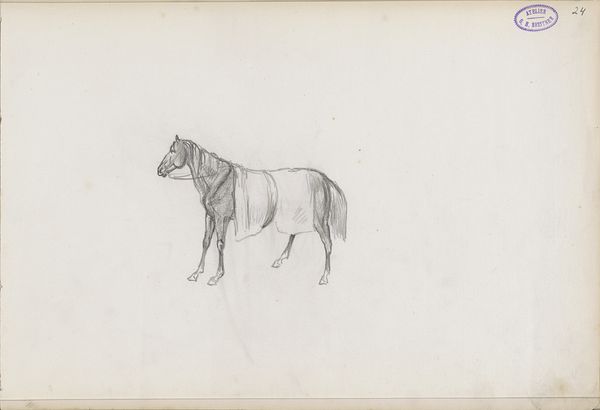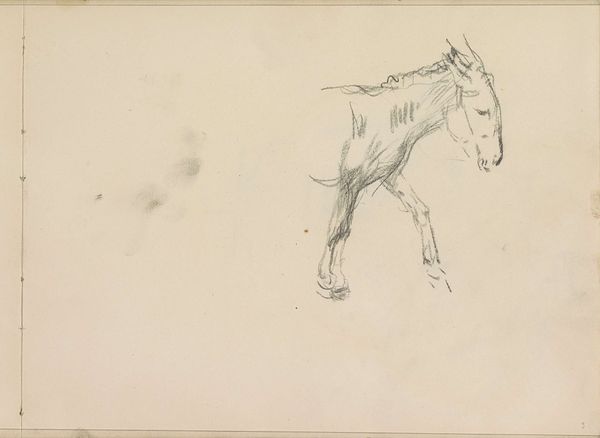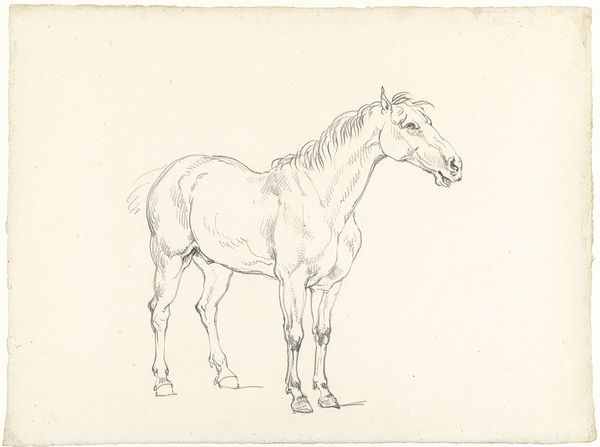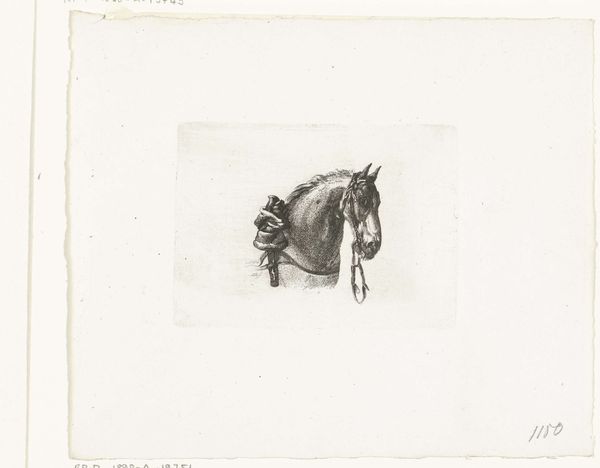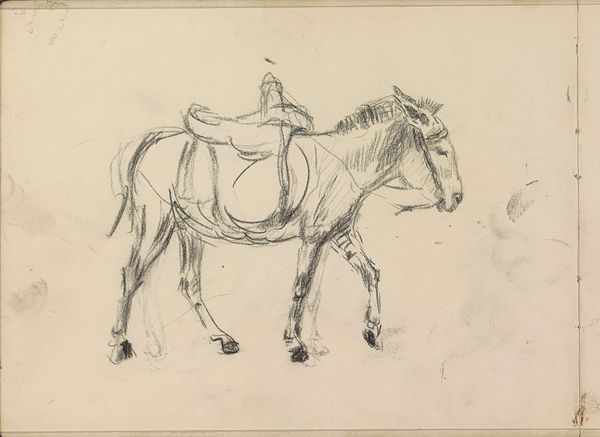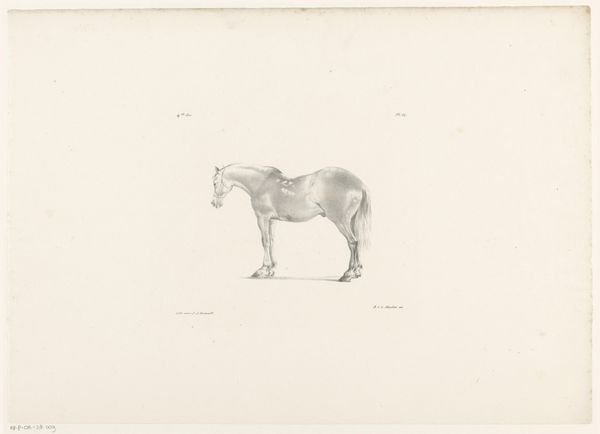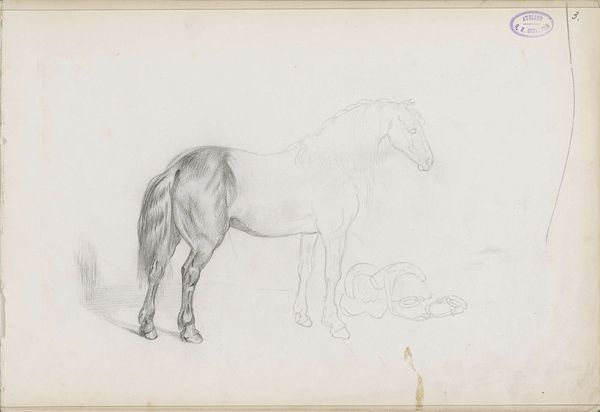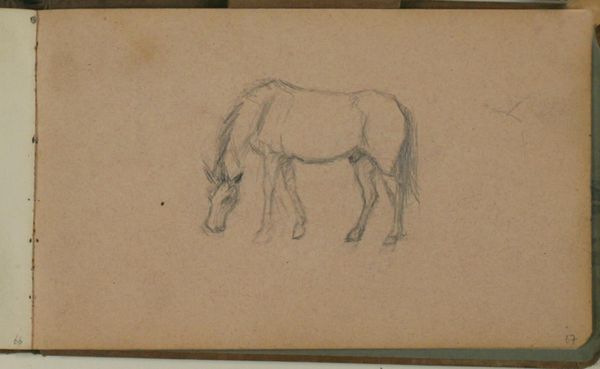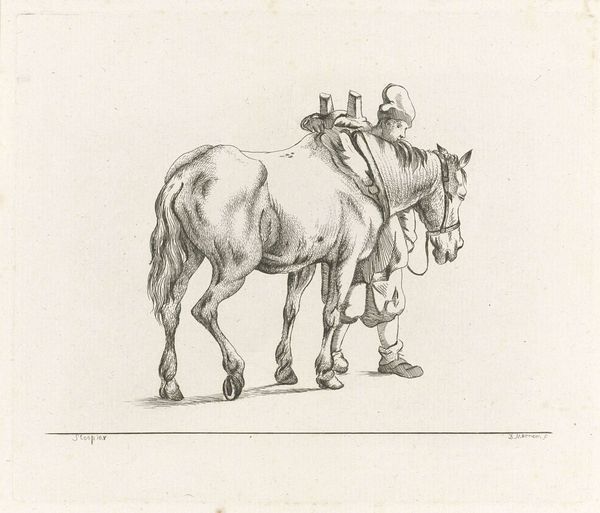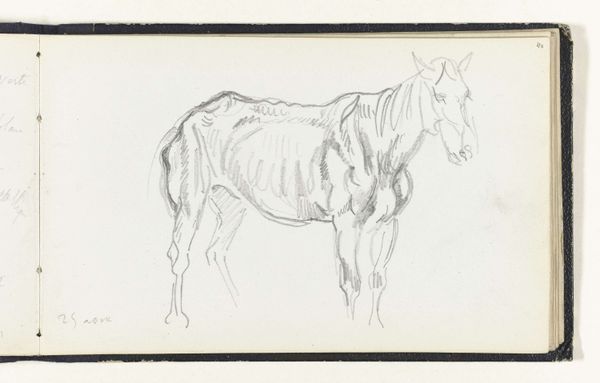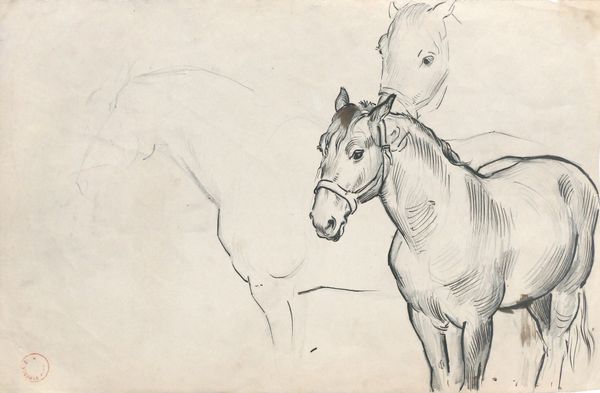
drawing, pencil, charcoal
#
drawing
#
animal
#
landscape
#
charcoal drawing
#
form
#
pencil drawing
#
pencil
#
horse
#
line
#
charcoal
#
charcoal
#
realism
Dimensions: 6 5/8 x 8 in. (16.8 x 20.3 cm)
Copyright: Public Domain
Curator: At first glance, I feel a peculiar sense of stillness about this drawing. The horse appears almost pensive. Editor: Let's take a closer look. We're observing a work titled "Horse (from Sketchbook)" by Francis William Edmonds, likely created between 1835 and 1839. The artwork is a pencil and charcoal drawing on paper. What symbolic resonance do you detect here? Curator: Well, horses traditionally embody strength and freedom, but there’s a restraint at play. This isn’t a wild stallion, but a saddled horse, suggesting domestication, service. The line work, though delicate, implies confinement rather than boundless liberty. Its averted gaze speaks of a reflective state. The image evokes an archetype of a creature caught between freedom and function, wild nature and tamed utility. Editor: It's fascinating how you connect those cultural meanings. What intrigues me as a historian is how Edmonds' artistic pursuits, occurring amid growing urbanism, might have imbued subjects like horses with newfound nostalgia. Animal representation in art frequently speaks to anxieties around progress and mechanization, doesn't it? Perhaps these sketchbooks served as a personal counterpoint to those shifts. The realism with which Edmonds renders the animal’s anatomy speaks, to me, of his social position and potential artistic aspirations. Curator: It certainly underscores a period grappling with evolving relationships between humanity and the natural world. The texture from combined usage of pencil and charcoal lend an almost tactile quality to the rendering. One can almost feel the horse's weight and muscular form through Edmond's depiction. And look at the contrast – light and shadow dance to highlight the form and musculature so masterfully. What’s striking is this sense of understated realism, devoid of grandstanding bravado. Editor: Yes, I agree. The subtle realism also suggests a degree of scientific observation becoming interwoven into artistic practices. It's an artistic era steeped in emergent discourses around evolution and natural history. The museum context itself continues to evolve – from private collections into spaces for increasingly broader audiences to ponder and engage with images like these, speaking volumes about power and access to knowledge. Curator: Indeed, placing Edmonds' sketch within such conversations offers fertile ground for interpretive reflection. Thank you! Editor: Thank you. Hopefully, our perspectives provided fresh avenues to explore this seemingly simple sketch!
Comments
No comments
Be the first to comment and join the conversation on the ultimate creative platform.
